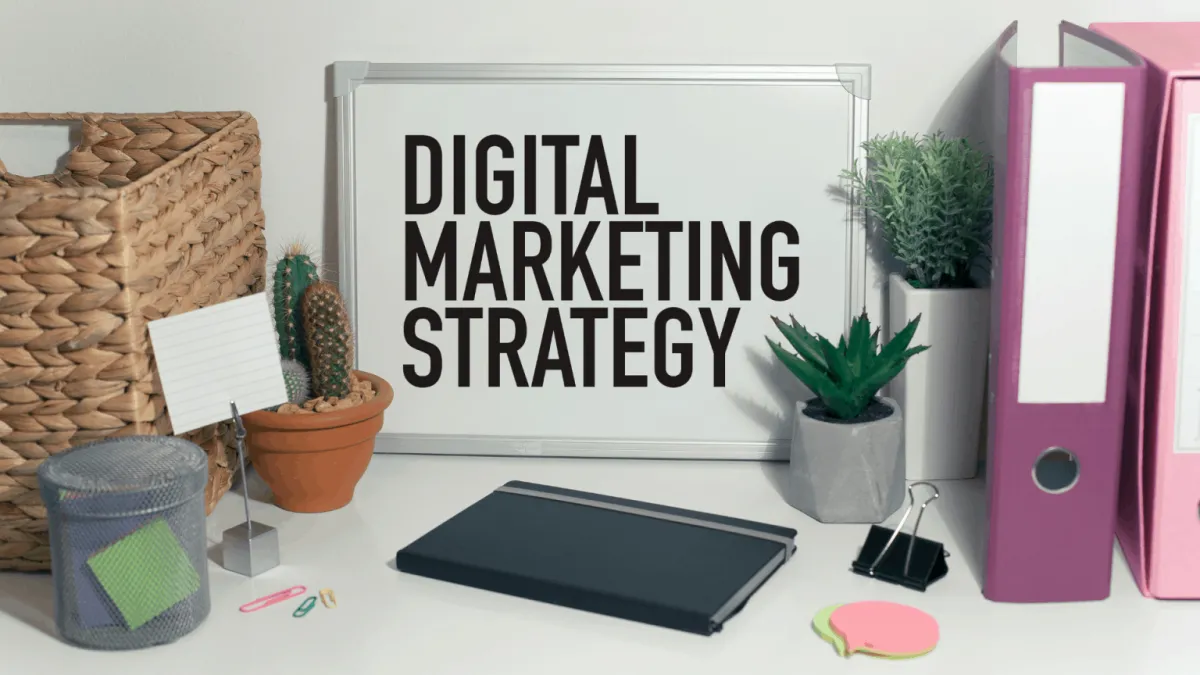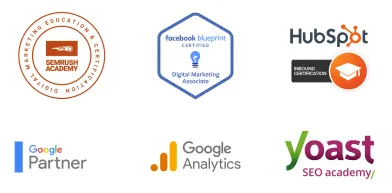TO LEARN IS TO GROW
Learning Center
We do our research and publish our results. Should probably call this the Growing Center.


Local Digital Marketing Strategies for Businesses
A new and improved Local Digital Marketing Strategy that’s sure to help your business get the attention it needs from local customers.
Last year’s COVID-19 pandemic has forced businesses and consumers to shift online, which means that local companies need to invest more in their digital marketing effort lest they become obsolete amidst this new norm.
However, shifting online is not always a surefire way to stay afloat in today’s fiercely competitive market. This is particularly true for local businesses with less marketing budget and resources to compete with bigger companies.
Despite their limited resources, leading digital marketing expert LOJO Marketing believes that with the right use of online platforms, local companies have a competitive edge over their more established competitors, especially international and global brands that can’t act “local.”
LOJO Marketing shares how local businesses can use digital marketing strategies to improve their branding, reach their target consumers, and ultimately, grow their sales.
Take advantage of local search advertising.
This location-based marketing allows local businesses to launch ad campaigns targeting locals. For example, if a user types into the Google search box these keywords “plumbing contractor in Sacramento,” he will get a list of businesses in that city.
Use Facebook Ads to target local consumers.
The prevalence of Facebook is not the only thing that makes it a potent digital marketing tool. With the use of big data that includes the users’ demographics, location, and online activities, it is one of the most effective online platforms for targeting high-quality leads–i.e., people who are the most likely to turn into actual consumers.
However, LOJO Marketing’s pay-per-click (PPC) expert Luisa Gonzalez warns that Facebook Ads or any paid ads platforms “cannot fix a bad offer or a landing page that has content that fails to deliver or is poorly written.”
“You’ll be wasting money if your landing page does not deliver the promise mentioned in your PPC,” she says.
Complement Facebook Ads and other PPC campaigns with search engine optimization.
SEO remains the best digital marketing tool to increase the authority of an online local business, making it the best complementary partner of PPC in which the goal is to connect with a highly targeted audience (within a time-sensitive period). Combining these two strategies is almost a surefire way to boost brand awareness, and ultimately, sales.

Harness Instagram’s visual appeal.
Instagram is another effective social media tool for local businesses, thanks to its location tags and hashtags that mention their community or city. With this platform, small companies can partner with “local influencers” (i.e., or someone with large followings) in exchange for a free product or service.
Just like Facebook and other popular social media sites, Instagram also gives local businesses a unique advantage because it is a platform that rewards community-focused content and authentic connection.To get started, local businesses can plug in the city in the “location” tab.
Use local content marketing campaigns.
Local content marketing can help with a business’s SEO ranking. For example, a solar panel contractor in California can create a content that highlights the advantage of this clean energy source in hot-humid regions where the air-conditioning system accounts for a huge chunk of the electricity bill.
Use geotags on social media.
Geotagging is arguably the most effective location-based digital marketing, although many local companies fail to utilize this free digital marketing tool.
In a nutshell, geotagging allows local businesses and social media users to tag videos, photos, and posts with a specific location. Popular social sites like Facebook, Instagram, Youtube, and Flickr offer this feature.
To demonstrate how geotagging can help local businesses improve their online presence, a local yoga studio can geotag a public park to target health buffs in the community.
Aside from landmarks and the town’s favorite “hangout,” geotagging also works wonders on local events. For example, a restaurant can geotag a post with the location of a local festival–i.e., combining the event hashtag and the geographical tag.
Utilize geolocation marketing.
In essence, geolocation marketing is a practice in which a business uses a customer’s physical location to inform him about their ads. (Note: Thanks to GPS, a local brand can reach customers when it detects that their mobile device is nearby.)
Aside from ad-related information, local businesses can also deliver messages, promos, and discounts to customers nearby. Starbucks is arguably the most successful in this tactic thanks to their “Mobile Order and Pay” app that allows customers to click an order and pick it up at the nearest local store.

Include contact information on all website pages.
Failure to include contact information–e.g., phone number, email address, and physical mailing address or office–is one of the costliest mistakes any business can make when building their website.
Another common mistake is only to include the contact information on the “About Us” page.
LOJO Marketing says that contact information is best placed at the top left or right corner of the home page, or even better, on every website page so that visitors can find it easily.
The leading digital marketing expert warns that today’s online users are “increasingly becoming impatient and less forgiving, adding that they are “ready to leave a website if it takes too much time and effort to find the contact information.”
Built for Growth. Backed by 25 Years of Trust.
For over two decades, LOJO has been a trusted partner to hundreds of businesses just like yours. Whether working directly with owners, managers, teams, or boards of directors, our goal remains the same: to be a reliable and results-driven asset to your business.
Over the years, we’ve carefully built a team of experts—each selected for their unique skills, strengths, and personalities. Our clients choose LOJO because they know we genuinely care about their success.
And after 25 years of helping businesses grow, we’re more committed than ever.



Built for Growth. Backed by 25 Years of Trust.
For over two decades, LOJO has been a trusted partner to hundreds of businesses just like yours. Whether working directly with owners, managers, teams, or boards of directors, our goal remains the same: to be a reliable and results-driven asset to your business.
Over the years, we’ve carefully built a team of experts—each selected for their unique skills, strengths, and personalities. Our clients choose LOJO because they know we genuinely care about their success.
And after 25 years of helping businesses grow, we’re more committed than ever.




Matthew Rogers, President
iProspect Check
After spending several months reviewing multiple proposals from several different companies we engaged LOJO to develop a new website that represents our company effectively. We worked initially with Stephen Platte who helped create the scope of the project. Stephen was knowledgeable and always followed up with me on time and as promised.
He "closed the deal" for LOJO with his professionalism, service orientation and easy going approach. Once we signed the contract we were introduced to Jay Kelly who would be the creative lead for LOJO. This was the most challenging part of the project for my company, as there was no shortage of ideas from our side. Jay managed the project flawlessly, and once we had all agreed to the design, Jay introduced us to Eric.
Eric Lay is one of the founders of LOJO. Eric took the design we had developed and brought it to life. We delivered content as quickly as he requested it. Eric kept the project on task and we responded by exceeding every deadline for content. In turn, once provided, literally not a day went by that Eric didn't add the content and take the next step. In just a few weeks we launched our new website. Eric is a pleasure to work with.
His positive attitude and consultative approach really enhanced the experience and made a big difference for us in the outcome of our project. We would welcome you to visit our website to take a look at the quality work of LOJO. We are very pleased with LOJO and look forward to working with them in the future as we pursue an aggressive SEO strategy."
After spending several months reviewing multiple proposals from several different companies we engaged LOJO to develop a new website that represents our company effectively. We worked initially with Stephen Platte who helped create the scope of the project. Stephen was knowledgeable and always followed up with me on time and as promised.
He "closed the deal" for LOJO with his professionalism, service orientation and easy going approach. Once we signed the contract we were introduced to Jay Kelly who would be the creative lead for LOJO. This was the most challenging part of the project for my company, as there was no shortage of ideas from our side. Jay managed the project flawlessly, and once we had all agreed to the design, Jay introduced us to Eric.
Eric Lay is one of the founders of LOJO. Eric took the design we had developed and brought it to life. We delivered content as quickly as he requested it. Eric kept the project on task and we responded by exceeding every deadline for content. In turn, once provided, literally not a day went by that Eric didn't add the content and take the next step. In just a few weeks we launched our new website. Eric is a pleasure to work with.
His positive attitude and consultative approach really enhanced the experience and made a big difference for us in the outcome of our project. We would welcome you to visit our website to take a look at the quality work of LOJO. We are very pleased with LOJO and look forward to working with them in the future as we pursue an aggressive SEO strategy."

Matthew Rogers, President
iProspect Check
The team at LOJO were wonderful to work with. They are well organized and very patient as we worked through our marketing strategy and developed a well thought out and clear action plan at a reasonable price. We will definitely be back for our future campaign needs."

Jon Crosby, Founder
Dazil

